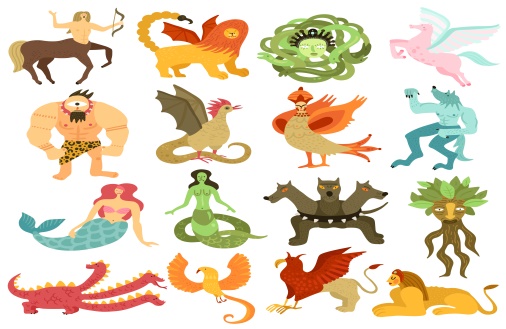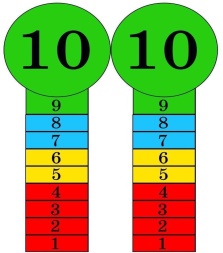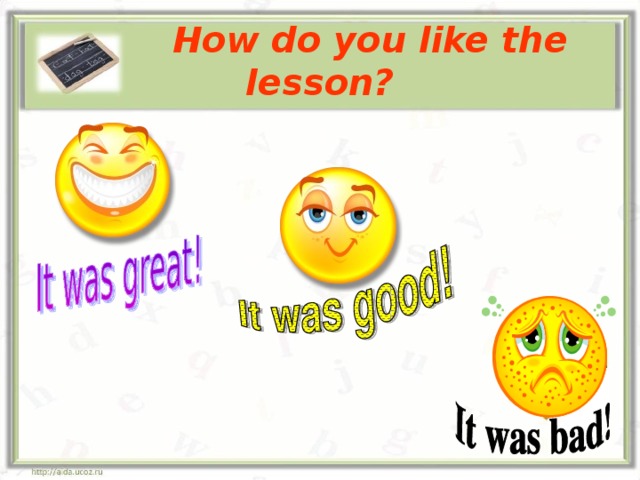
Short term plan: term 3
|
Unit: 5 Creativity |
Lesson 49 |
||
|
Teacher name: |
|
||
|
Date: |
|
||
|
Grade: 5 |
Number present: |
absent: |
|
|
Lesson title |
Vocabulary: Mythical creatures |
||
|
Learning objectives |
5.2.4.1 understand the main points of supported extended talk on a range of general and curricular topics; 5.3.1.1 provide basic information about themselves and others at sentence level on an increasing range of general topics; |
||
|
Lesson objectives |
Learners will be able to: - present some mythical creatures - present new vocabulary - relate mythical creatures to animals - describe mythical creatures |
||
|
Value links |
Family – Family values are moral and ethical principles of typical family life, including sacrificing for loved ones, putting your loved ones first, and keeping your loved ones at the centre of your thoughts and actions. |
||
|
Plan |
|||
|
Stages / Time |
Teachers actions |
Students actions |
Assessment criteria |
Resources |
|
Beginning of the lesson Warming-up
3 min. Pre-learning «Brainstorming» method 7 min. |
Organization moment : 1.Greeting. Ask about the weather. The teacher sets the lesson objectives, letting students know what to anticipate from the lesson. Warming up Where are you from? How old are you? What color is it? How many students are there in class? What day of the week today? Lead – In
|
The aim: To develop pupils speaking skills and create friendly atmosphere Efficiency: By wishing each other they feel better and feel the support of others Students of the class are listed. Students' attention is drawn to the lesson. Students say different words from the picture •Learners remember previous lesson vocabulary •Learners answer the questions |
The teacher to assess learners for their ability. “Good job! Well done!” Formative Assessment
Good job! Assessment criteria make basic statements related to personal information, people and objects on familiar topics and a treasure hunt |
Pictures worksheet Picture |
|
Middle of the lesson Presentation part. 30 min |
Ex:1 P: 57 • Draw Ss' attention to the pictures and ask various Ss to read out the name of the creature each one shows. Play the recording. Ss listen and repeat chorally or individually. Elicit the L1 equivalents from Ss around the class. Ex: 2 P: 57 • Go through the features in the list and explain/elicit the meanings of any unknown words. Play the recording. Ss listen and repeat chorally or individually and point to each feature as it is mentioned Ex: 3 P: 57 • Elicit which creatures look like the animals in the list.
Ex: 4 P: 57 • Read out the example and ask various Ss around the class to describe the creatures using the phrases given earlier.
Conclusion during the lesson some tasks differentiated by outcomes of the students and by their abilities. |
• Learners look at the pictures. Listen and repeat. Answer the question. ANSWERS Students’ own answer • Learners listen, repeat and point. ANSWERS Students’ own answer • Learners answer the question ANSWERS A hippogriff looks like a horse and an eagle. A phoenix looks like an eagle. The Samruk looks like an eagle. A cyclops looks like a giant. A unicorn looks like a horse. A dragon looks like a huge snake • Learners describe the creatures ANSWERS A phoenix looks like an eagle. It has got a long tail, sharp claws, a beak, big wings and long feathers. A hippogriff looks like a horse and an eagle. It has got a thick mane, a long tail, sharp claws, a beak, big wings and long feathers. A cyclops looks like a giant. It has got a single eye and sharp teeth. A dragon looks like a huge snake. It has got a long tail, sharp claws, big wings and sharp teeth. The Samruk looks like an eagle. It's got a long tail, a beak, big wings and long feathers |
Descriptor: - look at the pictures - listen and repeat. - answer the question. Total: 3 point
self assessment Differentiation: «Verbal support» method is used to help Ss use new words in the sentences. Descriptor: - listen, repeat and point. Total: 3 point Descriptor: - ask and answer the question Total: 3 point -Make CCQ questions Yes / No |
Card Worksheet Students book |
|
End of the lesson 5 min |
FEEDBACK Learners provide feedback on what they have learned at the lesson. Ex: P: Home task: Write the days |
|
Poster Success
|
|
жүктеу мүмкіндігіне ие боласыз
Бұл материал сайт қолданушысы жариялаған. Материалдың ішінде жазылған барлық ақпаратқа жауапкершілікті жариялаған қолданушы жауап береді. Ұстаз тілегі тек ақпаратты таратуға қолдау көрсетеді. Егер материал сіздің авторлық құқығыңызды бұзған болса немесе басқа да себептермен сайттан өшіру керек деп ойласаңыз осында жазыңыз
Mythical creatures 5 сынып
Mythical creatures 5 сынып
Short term plan: term 3
|
Unit: 5 Creativity |
Lesson 49 |
||
|
Teacher name: |
|
||
|
Date: |
|
||
|
Grade: 5 |
Number present: |
absent: |
|
|
Lesson title |
Vocabulary: Mythical creatures |
||
|
Learning objectives |
5.2.4.1 understand the main points of supported extended talk on a range of general and curricular topics; 5.3.1.1 provide basic information about themselves and others at sentence level on an increasing range of general topics; |
||
|
Lesson objectives |
Learners will be able to: - present some mythical creatures - present new vocabulary - relate mythical creatures to animals - describe mythical creatures |
||
|
Value links |
Family – Family values are moral and ethical principles of typical family life, including sacrificing for loved ones, putting your loved ones first, and keeping your loved ones at the centre of your thoughts and actions. |
||
|
Plan |
|||
|
Stages / Time |
Teachers actions |
Students actions |
Assessment criteria |
Resources |
|
Beginning of the lesson Warming-up
3 min. Pre-learning «Brainstorming» method 7 min. |
Organization moment : 1.Greeting. Ask about the weather. The teacher sets the lesson objectives, letting students know what to anticipate from the lesson. Warming up Where are you from? How old are you? What color is it? How many students are there in class? What day of the week today? Lead – In
|
The aim: To develop pupils speaking skills and create friendly atmosphere Efficiency: By wishing each other they feel better and feel the support of others Students of the class are listed. Students' attention is drawn to the lesson. Students say different words from the picture •Learners remember previous lesson vocabulary •Learners answer the questions |
The teacher to assess learners for their ability. “Good job! Well done!” Formative Assessment
Good job! Assessment criteria make basic statements related to personal information, people and objects on familiar topics and a treasure hunt |
Pictures worksheet Picture |
|
Middle of the lesson Presentation part. 30 min |
Ex:1 P: 57 • Draw Ss' attention to the pictures and ask various Ss to read out the name of the creature each one shows. Play the recording. Ss listen and repeat chorally or individually. Elicit the L1 equivalents from Ss around the class. Ex: 2 P: 57 • Go through the features in the list and explain/elicit the meanings of any unknown words. Play the recording. Ss listen and repeat chorally or individually and point to each feature as it is mentioned Ex: 3 P: 57 • Elicit which creatures look like the animals in the list.
Ex: 4 P: 57 • Read out the example and ask various Ss around the class to describe the creatures using the phrases given earlier.
Conclusion during the lesson some tasks differentiated by outcomes of the students and by their abilities. |
• Learners look at the pictures. Listen and repeat. Answer the question. ANSWERS Students’ own answer • Learners listen, repeat and point. ANSWERS Students’ own answer • Learners answer the question ANSWERS A hippogriff looks like a horse and an eagle. A phoenix looks like an eagle. The Samruk looks like an eagle. A cyclops looks like a giant. A unicorn looks like a horse. A dragon looks like a huge snake • Learners describe the creatures ANSWERS A phoenix looks like an eagle. It has got a long tail, sharp claws, a beak, big wings and long feathers. A hippogriff looks like a horse and an eagle. It has got a thick mane, a long tail, sharp claws, a beak, big wings and long feathers. A cyclops looks like a giant. It has got a single eye and sharp teeth. A dragon looks like a huge snake. It has got a long tail, sharp claws, big wings and sharp teeth. The Samruk looks like an eagle. It's got a long tail, a beak, big wings and long feathers |
Descriptor: - look at the pictures - listen and repeat. - answer the question. Total: 3 point
self assessment Differentiation: «Verbal support» method is used to help Ss use new words in the sentences. Descriptor: - listen, repeat and point. Total: 3 point Descriptor: - ask and answer the question Total: 3 point -Make CCQ questions Yes / No |
Card Worksheet Students book |
|
End of the lesson 5 min |
FEEDBACK Learners provide feedback on what they have learned at the lesson. Ex: P: Home task: Write the days |
|
Poster Success
|
|

шағым қалдыра аласыз























